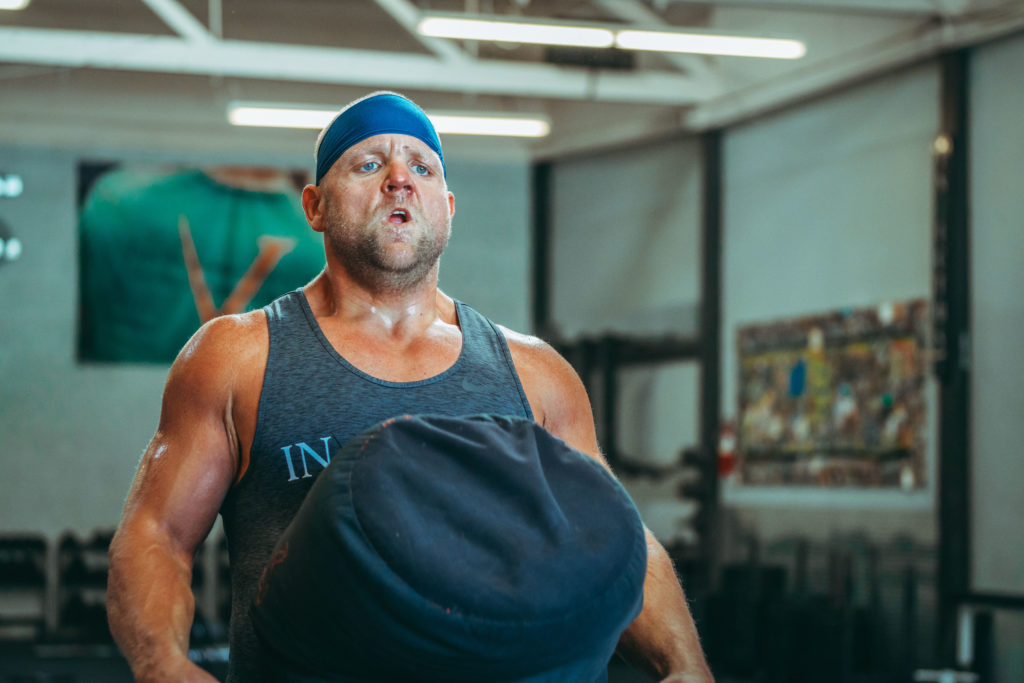
Injury Tips – How to Modify Your Workout
Written by Michele Vieux
Unfortunately for me, I have had a lot of personal experience with injury. In the past, it was from not properly warming up, cooling down, and for my all-out mentality and “taking one for the team”. But now that I’m older and wiser…sometimes these past problems that were never properly addressed rear their ugly heads. Or I’m just clumsy. Either way, injuries happen but they don’t need to stop you from progressing. Fortunately for everyone I coach, it gives me some good tools and ideas to suggest for how to modify if the dreaded happens but you still want to train in some way. Here are some suggestions:
Tips for Modifying When Injured
#1 – The “Things I CAN Do” List
When you’re feeling down about all the things you can’t do, it helps to have one of these lists handy. When making this list, people usually divert to some creative modifications of the prescribed movement, which is cool. I can feel you with this one, especially if you’re working out in a group environment and want to be part of the crowd. But it is not always necessary, nor the best plan of action. When creating mods, they don’t have to be the exact movement/pattern that has been prescribed. Think about what is best for you and your progress and NOT your ego. You could take advantage of this time to work on something different like mobility, breathing techniques, or another weakness. When I know I can’t complete the conditioning as prescribed but still want a challenge, I do my movements of choice but with nasal breathing only, which adds a whole different level of difficulty and it gives me lifelong benefits, both in and out of the gym. This is also a great place to add in any physical therapy exercises you’ve been assigned. But remember, it IS possible to overdo physical therapy. Trust me on this.
#2 – Isometric Holds
These are a great addition to any injury/recovery/pre-surgery plan. They allow you to contract the muscle without putting the joint through a painful range of motion (ROM). An isometric exercise is any strength-training movement where your muscle length and the angle of your joints do NOT change. Common examples include the prone plank, side plank, and bar hang. All three involve simply holding a key position with little to no movement. Other examples in our space often programmed are handstand holds, static hangs, wall sits, hollow holds, and front rack kettlebell holds. When I was having issues with my knees and hips, I would replace squats with wall sits. Deadlifts with hip bridge holds. Lunges with lunge holds. Those allowed me to work the same muscles but without painful, repetitive motion (knee flexion at the time). This warm-up with all the banded iso holds is another good example of something to throw in, especially on “leg day”. You could use it as your squat station and get some good activation going.
#3 – Sleds and/or Carries Instead
There are all kinds of ways you can push/pull/hold the weight to make things interesting and challenging. Can’t deadlift? Reverse sled drag instead. You can pretty safely move a ton of weight with the sled. See how heavy you can go and feel those muscles burning and the satisfaction of moving more weight than you ever have before! Can’t run? Sandbag carry. Performing carries with “awkward objects” such as the sandbag, you will be prompted into more natural movement patterns that minimize risk of injury. Using objects that will more naturally follow basic patterns of movement that will prove incredible benefits to athletes and those looking to reduce pain for a better quality of life.
Are you working around an injury? Do you need help with some ideas? Share yours here or hit me up with an email so we can put our heads together to get you back to training smartly!
Great article, after having covid I started out slow and easy. Maybe not enough, now I hurt my lower back with leg training. Combination of not enough warming up, it’s getting cold here and I should have prepped myself with the exercises you mentioned.
Wake up call again!